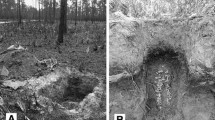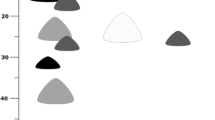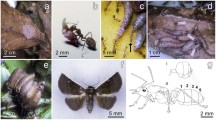Summary
Production of the major subcaste and its contribution to nest survival in the dimorphic ant Colobopsis nipponicus was examined in the field. In this species, the first major workers were reared in the second brood, very early in the colony life cycle. A field experiment demonstrated that artificial colonies without major workers could not survive, whereas colonies with at least one major worker per nest entrance could. Because major workers of C. nipponicus defend the nest entrance by head plugging, the lack of nest defenders in the experimental colonies seemed to be a major cause of nest failure. The defensive value of major workers was much higher than that of minor workers. Many artificial colonies without major workers were displaced by competitors for nest sites, especially by those of other conspecific colonies. In addition, more than 90% of field colonies nested with other conspecific colonies on the same tree. The early production of major workers in C. nipponicus seemed to be very important for the survival of incipient colonies.
Similar content being viewed by others
References
Busher CE, Calabi P, Traniello JFA (1985) Polymorphism and division of labor in the neotropical ant Camponotus serieeiventris Guerin (Hymenoptera: Formicidae). Ann Entomol Soc Am 78:221–228
Cole BJ (1980) Repertoire convergence in two mangrove ants, Zacryptocerus varianus and Camponotus (Colobopsis) sp. Insectes Soc 27:265–275
Detrain C, Pasteels JM (1992) Caste polyethism and collective defense in the ant, Pheidole pallidura: the outcome of quantitative differences in recruitment. Behav Ecol Sociobiol 29:405–412
Fowler HG (1987) Worker polymorphism in field colonies of carpenter ants (Hymenoptera: Formicidae: Camponotus): Stochastic selection? Insectes Soc 34:204–210
Gibson RL (1989) Soldier production in Camponotus novaeboracensis during colony growth. Insectes Soc 36:28–41
Hasegawa E (1992) Annual life cycle and timing of male egg production in the ant Colobopsis nipponicus (Wheeler). Insectes Soc 39:439–446
Hasegawa E (1993) Caste specialization in food storage in the dimorphic ant Colobopsis nipponicus (Wheeler). Insectes Soc 40, in press
Herbers JM (1986) Nest site limitation and facultative polygyny in the ant Leptothorax longispinosus. Behav Ecol Sociobiol 19:115–122
Herbers JM (1989) Community structure in north temperate ants: temporal and spatial variation. Oecologia 81:201–211
Hirono Y (1990) Histological and ecological studies on the caste differentiation of the Japanese damp-wood termite Hodotermopsis japonica (Termopsidae: Isoptera). Doctor's thesis, University of Tokyo, Tokyo, Japan
Hölldobler B, Wilson EO (1990) The ants. Belknap, Cambridge
Ito F, Higashi S, Maeta Y (1988) Growth and development of Camponotus (Paramyrmamblys) kiusiuensis Santschi colonies (Hymenoptera Formicidae). Insectes Soc 35:251–261
Lachaud JP, Passera L, Grimal A, Detrain C, Beugnon G (1992) Lipid storage by major workers and starvation resistance in the ant Pheidole pallidula (Hymenoptera, Formicidae). In: Billen J (ed) Biology and evolution of social insects. Leuven University Press, Leuven, Belgium, pp 153–160
Mirenda JT, Vinson SB (1981) Division of labour and specification of castes in the red imported fire ant Solenopsis invicta Buren. Anim Behav 29:410–420
Moffet MW (1986) Notes on the behavior of the dimorphic ant Oligomyrmex overbecki (Hymenoptera: Formicidae). Psyche 93:107–116
Moffet MW (1987) Division of labour and diet in the extremely polymorphic ant Pheidologeton diversus. Nat Geog Res 3:282–304
Oster GF, Wilson EO (1978) Caste and ecology in the social insects. Princeton University Press, Princeton
Patel AD (1990) An unusually broad behavioral repertory for a major worker in a dimorphic ant species: Pheidole morrisi (Hymenoptera: Formicidae). Psyche 97:181–191
Porter SD, Tschinkel WR (1985) Fire ant polymorphism (Hymenoptera: Formicidae): factors affecting worker size. Ann Entomol Soc Am 78:381–386
Rissing SW (1987) Annual cycles in worker size of the seed-harvester ant Veromessor pergandei (Hymenoptera: Formicidae). Behav Ecol Sociobiol 20:117–124
Southwood THE (1978) Ecological methods. Chapmann and Hall, New York
Tschinkel WR (1988) Colony growth and the ontogeny of worker polymorphism in the fire ant, Solenopsis invicta. Behav Ecol Sociobiol 22:103–115
Tsuji K (1990) Nutrient storage in the major workers of Pheidole ryukyuensis (Hymenoptera: Formicidae). Appl Entomol Zool 25:283–287
Villet MH (1990) Division of labour in the Metabele ant Megaponera foetens (Fabr.) (Hymenoptera: Formicidae). Ethol Ecol Evol 2:397–417
Walker JM (1984) The soldier caste and colony structure in the ant Camponotus (Colobopsis) impressus. Dissertation, University of California, Davis, California, USA
Walker JM, Stamps J (1986) A test of optimal caste ratio theory using the ant Camponotus (Colobopsis) impressus. Ecology 67:1052–1062
Wilson EO (1953) The origin and evolution of polymorphism in ants. Q Rev Biol 28:136–156
Wilson EO (1971) The insect societies. Belknap, Cambridge
Wilson EO (1974) The soldier of the ant Camponotus (Colobopsis) fraxinicola as a trophic caste. Psyche 81:182–188
Wilson EO (1976) A social ethogram of the neotropical arboreal ant Zacryptocerus varianus (Fr. Smith). Anim Behav 34:354–363
Wilson EO (1978) Division of labour in fire ants based on physical castes (Hymenoptera: Formicidae: Solenopsis). J Kansas Entomol Soc 51:615–636
Wilson EO (1980a) Caste and division of labour in leaf-cutter ants (Hymenoptera: Formicidae: Atta) I: The overall pattern in A. sexdens. Behav Ecol Sociobiol 7:143–156
Wilson EO (1980b) Caste and division of labour in leaf-cutter ants (Hymenoptera: Formicidae: Atta) II: The ergonomic optimization of leaf cutting. Behav Ecol Sociobiol 7:157–165
Wilson EO (1983) Caste and division of labour in leaf-cutter ants (Hymenoptera: Formicidae: Atta) IV: Colony ontogeny of A. cephalotes. Behav Ecol Sociobiol 14:55–60
Wilson EO (1984) The relation between caste ratios and division of labour in the ant genus Pheidole (Hymenoptera: Formicidae). Behav Ecol Sociobiol 16:89–98
Yamaguchi T (1992) Interspecific interference for nest sites between Leptothorax eongruus and Monomorium intrudens. Insectes Soc 39:117–127
Author information
Authors and Affiliations
Rights and permissions
About this article
Cite this article
Hasegawa, E. Nest defense and early production of the major workers in the dimorphic ant Colobopsis nipponicus (Wheeler) (Hymenoptera : Formicidae). Behav Ecol Sociobiol 33, 73–77 (1993). https://doi.org/10.1007/BF00171658
Received:
Accepted:
Issue Date:
DOI: https://doi.org/10.1007/BF00171658




